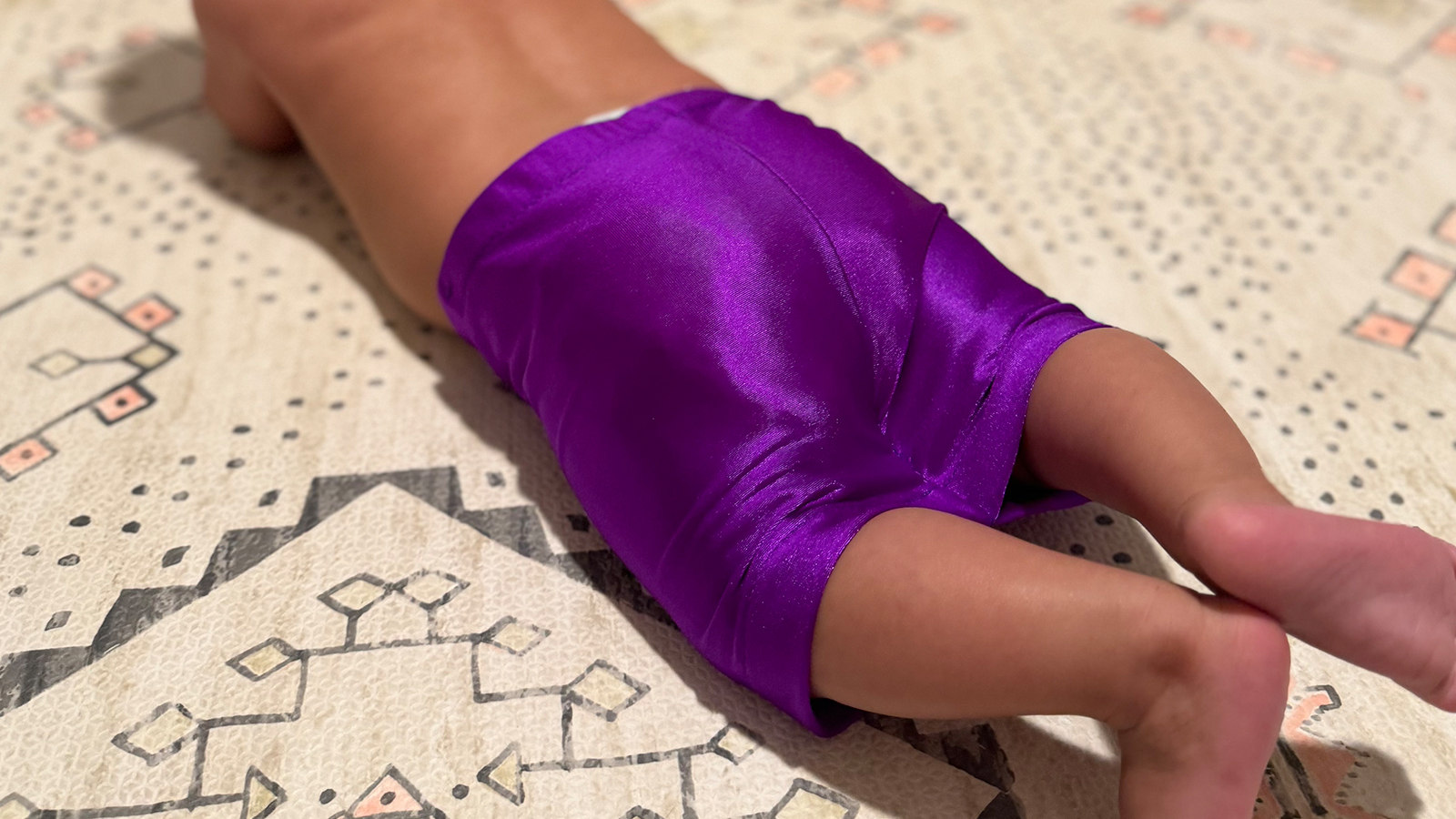Physical Therapy Researcher Works to Improve Quality of Life for Infants with Down Syndrome
Baylor University researcher Megan Flores, PT, PhD, Clinical Associate Professor in the Department of Physical Therapy, is working to improve the quality of life for individuals with Down syndrome. Flores is exploring whether an orthotic garment, called Hip Helpers®, could accelerate the acquisition of gross motor skills for infants with Down syndrome.

Since 2012, the United Nations has spurred a global voice in advocacy by observing World Down Syndrome Day on March 21. This date holds a particular significance—the 21st day of the third month—to celebrate the uniqueness of the triplication of chromosome 21.
According to the Centers for Disease Control and Prevention, Down syndrome remains the most common chromosomal condition diagnosed in the United States, occurring in about one in every 700 babies. Caused by an extra chromosome, Down syndrome changes how the baby’s brain and body develop, ultimately causing lifelong health, intellectual, and physical challenges.
ACQUISITION OF GROSS MOTOR SKILLS IN INFANTS
Low muscle tone is common in children with Down syndrome. As a result, gross motor skills acquisition—like rolling, coming up to sit, sitting by themselves, crawling, standing, and walking—for infants with Down syndrome is significantly delayed when compared to typically developing infants. Usually, these delays will increase as motor skills become more complex.
Megan Flores, PT, PhD, Clinical Associate Professor in the Department of Physical Therapy at Baylor University’s Robbins College of Health and Human Sciences, is working to improve the quality of life for families with Down syndrome. In one study, Flores and her colleagues are exploring whether an orthotic garment, called Hip Helpers®, could accelerate the acquisition of gross motor skills for infants with Down syndrome.
She explained licensed physical therapists often prescribe Hip Helpers® as a supplement to home program interventions, but its effectiveness with Down syndrome individuals had not been studied. This orthotic garment acts as pliable shorts over the lower extremities, helping to keep an infant’s upper legs together and promote a narrow base of support during active play.
“I thought that there must be a reason therapists keep using them, so we need some research to help explore their effectiveness,” Flores said. “Because these shorts are designed to keep a child’s base of support narrow, the child cannot rely on a wide base of support to stabilize and must use their trunk muscles. The trunk stability they gain may help them acquire gross motor skills faster.”
The study’s participants are required to have Down syndrome, between three and 15 months old, and not yet able to transition to upright sitting independently (a milestone that typically developing infants acquire at six months). In addition to attending regular physical therapy sessions, the study’s protocol consists of wearing the orthotic garment twice daily for 30 minutes each time during active play. They stop wearing the orthotic garment when they can pull to stand. Each month, the infants are assessed using the Gross Motor Function Measure (GMFM), and they remain in the study until they can take three independent steps.
“The GMFM was designed to measure motor function in children with cerebral palsy (ages six months to 16 years), but it has been found valid and reliable for measuring motor function in children with Down syndrome as well,” Flores explained. “It measures 88 items across five domains of gross motor function. These domains are 1) Lying and Rolling, 2) Sitting, 3) Crawling and Kneeling, 4) Standing, and 5) Walking, Running, and Jumping.”
Flores had started this study in 2020—right as the pandemic hit—and her team immediately experienced issues with recruitment and in-person testing. Ultimately, they had to pivot to remote administration via videoconference. While the Hip Helpers® study is on-going, it also spurred additional research for her in the physical therapy field.
“Telehealth physical therapy is becoming much more common,” Flores said. “So, I plan to study the psychometric properties of remotely-administered outcome measures for children with Down syndrome—to ensure that PTs can accurately evaluate and show progress in this population. I also plan to continue exploring home programs for children with Down syndrome, to carry over effective PT interventions and maximize functional mobility and independence.”
END THE STEREOTYPES
While Down syndrome causes lifelong challenges, early intervention therapies like counseling, occupational therapy, physical therapy, and speech therapy can help to improve quality of life. Community-based support systems are also important for individuals, ensuring they can experience inclusive education and activities that help to facilitate integration into society. In Baylor’s Robbins College, researchers and clinicians across disciplines—from physical and occupation therapy to communication sciences and disorders to public health—are engaged in work to advance and improve these efforts.
The theme for World Down Syndrome Day 2024 is “End the Stereotypes.” This year’s theme brings to light that way too often, individuals with Down syndrome find themselves facing discrimination. For example, many are denied an equitable education, access to quality health care, an opportunity to work, and the right to make decisions concerning their own life—often because of inaccurate stereotypes, and it’s the world’s responsibility to change this.
We ask that you take time today, World Down Syndrome Day, to learn, celebrate, and be a voice in advocacy.